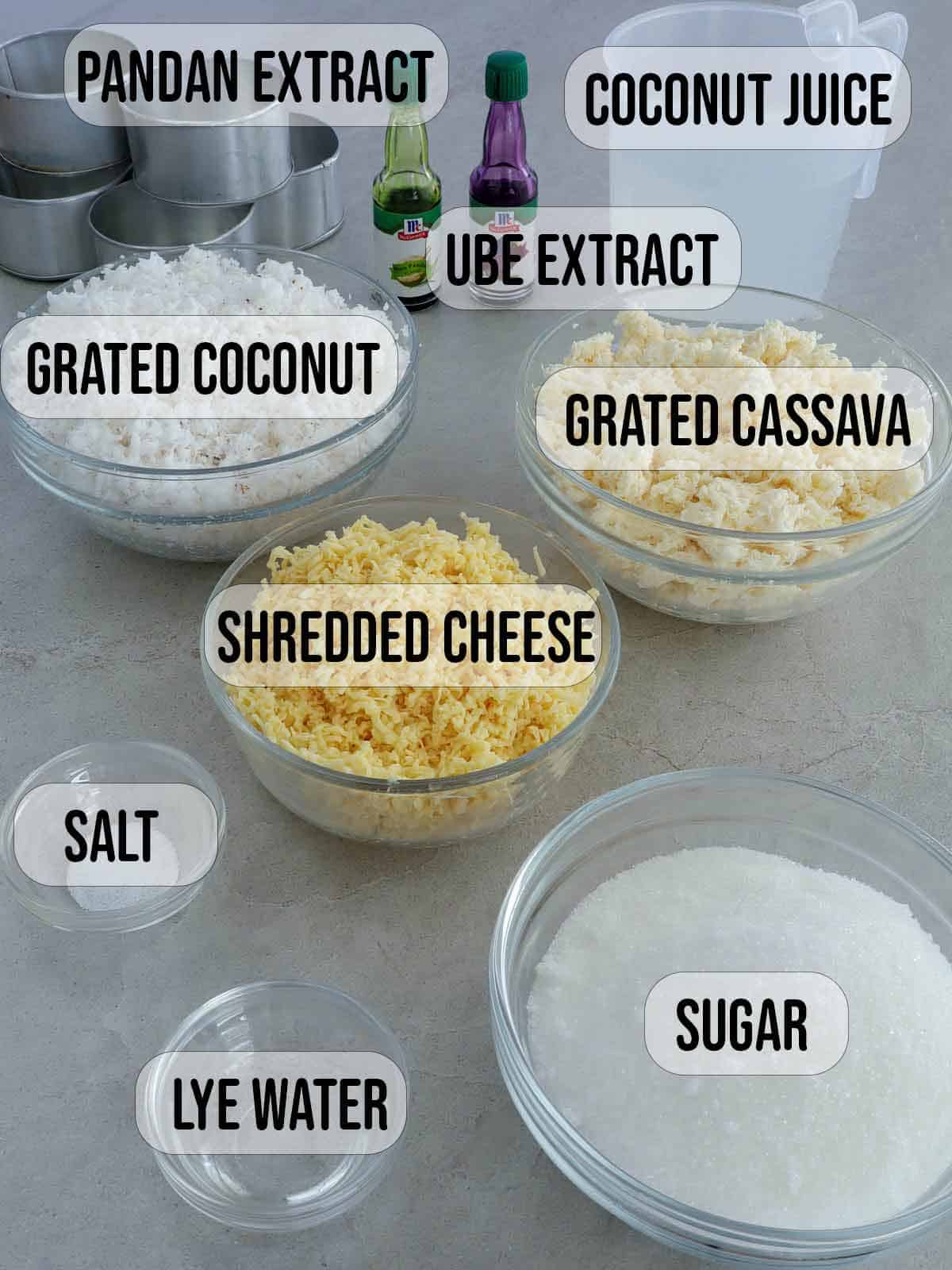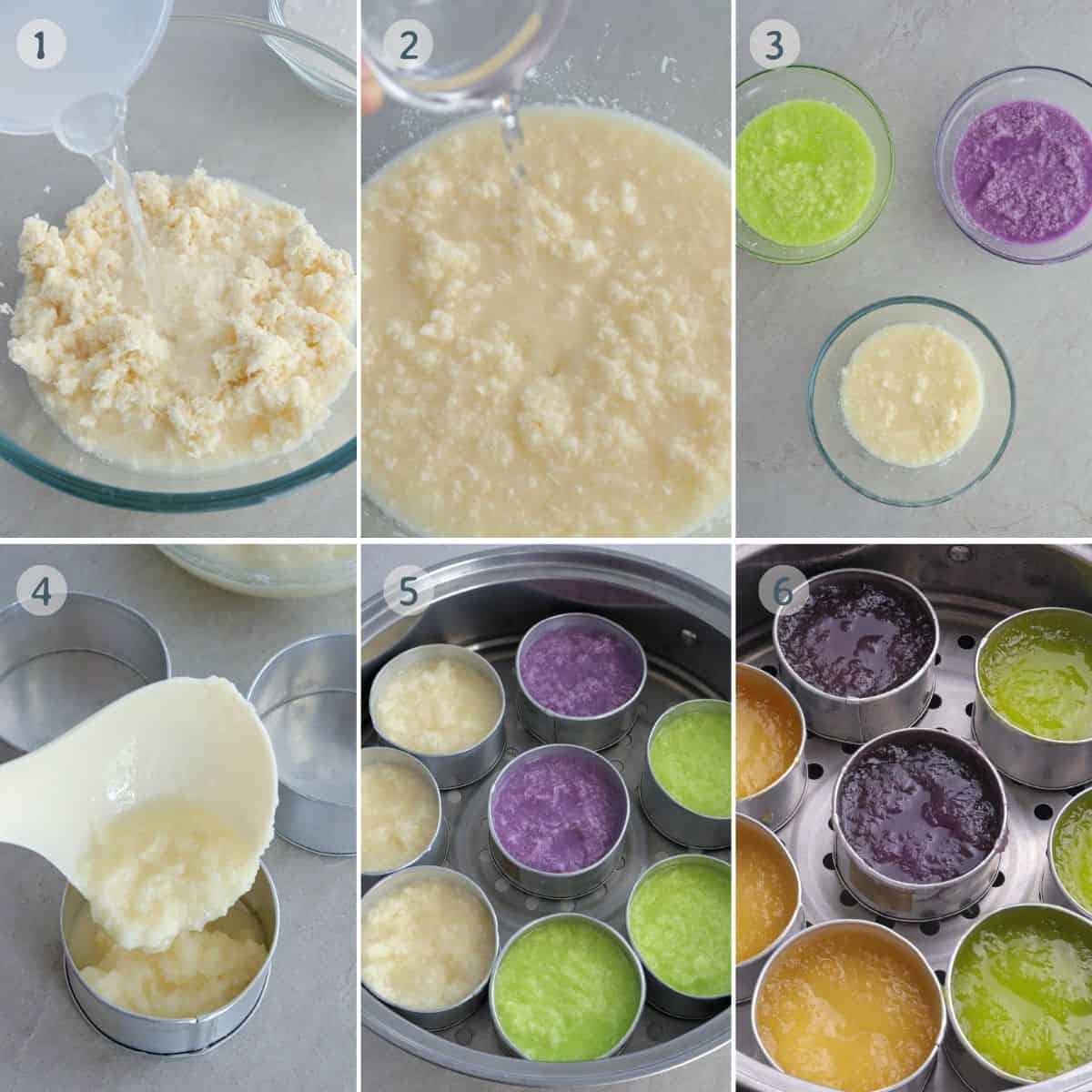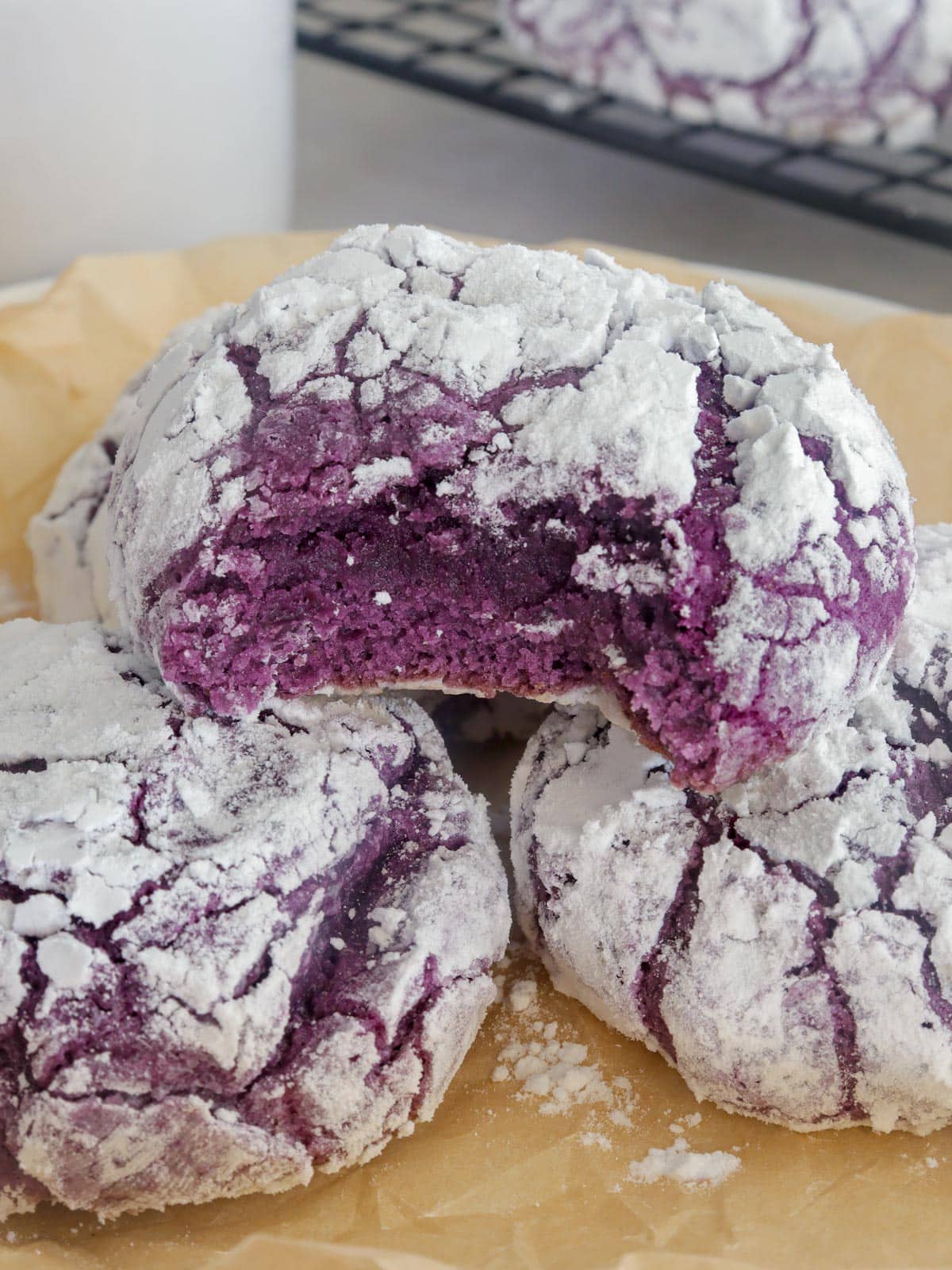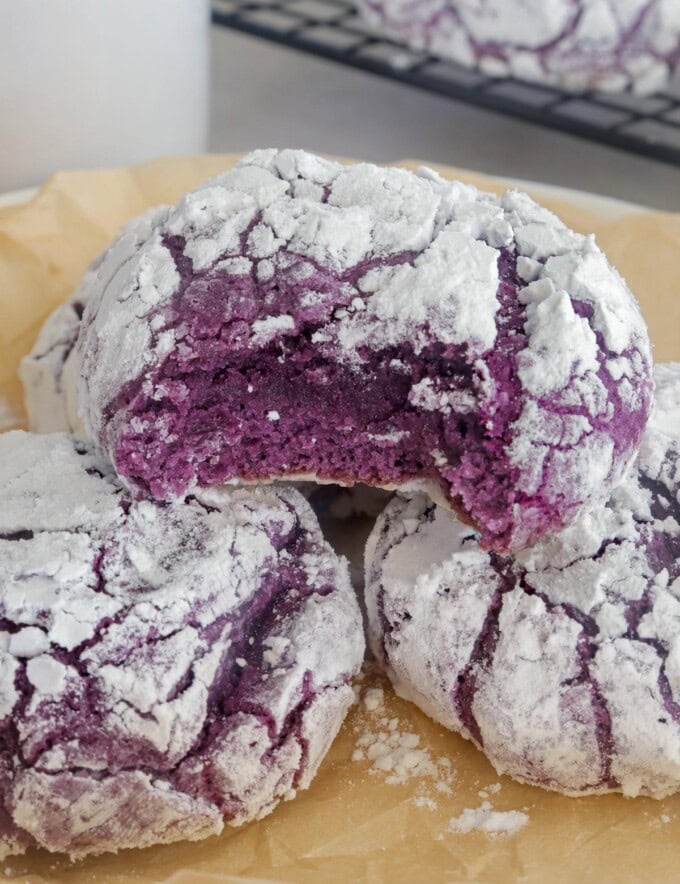Pichi-pichi is a Filipino delicacy made of grated cassava and coconut juice. Soft, chewy, and coated with grated coconut, this steamed cake is delicious as a snack or dessert.

Filipino cuisine has many local delicacies, and pichi-pichi is probably one of the easiest to make. Its process is as simple as combining all the ingredients in one bowl, steaming the mixture in individual molds, and then coating them in grated coconut when cooled.
The hardest part is grating the tubers, but you can save time and sweat using frozen grated cassava, which is available at most Asian supermarkets. Just plan ahead and thaw the package overnight. You'll
have your pitsi-pitsi or other favorite kamoteng kahoy recipes, such puto lanson, suman, and cassava cake, ready in no time.
Ingredient notes

- Cassava- I used frozen grated cassava in this recipe. If substituting fresh cassava tubers, finely grate using the small holes of a food grater or a food processor.
- Coconut juice- I like the taste of coconut juice, but feel free to use pandan water (read the short how-to below) or plain water and a few drops of pandan extract.
- Sugar- the recipe uses white granulated sugar, but you can substitute brown sugar to add a richer color and a hint of molasses flavor.
- Salt- this may seem out of place in a sweet dessert, but a few dashes will help balance flavors
- Food-grade Lye water- used in various food processes such as kutsinta and Chinese mooncakes, this strong alkaline gives the cakes a soft and springy texture. If you prefer not to use lye or don’t have access to it, you can read this article on using baked baking soda solution as an alternative.
- Grated Coconut- the pitsi-pitsi has sufficiently cooled, roll in the coconut to fully coat. You can also use shredded cheese for a delicious sweet and salty combination.
- Flavor extracts and food coloring- optional, but are an easy and fun way to make different varieties.
How to make pandan-flavored water
- Rinse some pandan leaves to remove dirt or grit, and tie them into a knot.
- Bring 2 cups water to a boil in a pot over medium heat.
- Add the pandan leaves to the boiling water and simmer for 8 to 10 minutes or until the water is fragrant and light green.
- Using a fine-mesh sieve, strain and discard the leaves. The infused water (1 ½ cups) can be used in the recipe.
How to prepare fresh cassava root
- Cut the tuber crosswise into halves or thirds to make peeling more manageable.
- Using a sharp paring knife, slice lengthwise through the thick bark and carefully insert the thin end of a blunt knife between the bark and the flesh to loosen. If the skin won’t peel easily, cut off the ends of the tuber and stand the root up on its end. Slice vertically down the sides of the root to peel the skin.
- Wash thoroughly and soak in a water bowl until ready to grate to keep from discoloring.
- For a smooth texture, finely grate the cassava using the small holes of a food grater or processor.
- Using cheesecloth, squeeze the grated cassava to remove some of the liquid. Make sure it's not too dry but still slightly wet.
Fresh vs Frozen
Freezing and thawing cassava adds extra moisture, creating a softer pichi-pichi. If you're using fresh cassava, you might need to increase the liquid in the mixture to about ½ cup to yield the same texture.
How to make Pichi-Pichi


- Combine cassava, coconut juice, sugar, and salt. Mix well until sugar and salt are dissolved.
- Add lye water and mix well.
- If using food color and extracts, divide the mixture into three small bowls. Add a few drops of a few drops of different extracts in each bowl and leave one plain. Let stand for about 30 minutes to one hour.
- Pour into individual molds and arrange them in a steamer. Regularly stir the mixture when pouring it into molds to evenly distribute the cassava and prevent it from settling at the bottom of the bowl.
- Steam until translucent, and a toothpick inserted in the center comes out clean. Cover the steamer's lid with cheesecloth or light cotton to prevent the steam from dripping onto the cakes.
- Remove the steamed cakes from the steamer and refrigerate to completely cool and set.
- Remove from molds and roll in coconut to coat fully. For variety, roll half of the batch in shredded cheese.
Equipment needed
- We used tin molds, available at most wet markets or major grocery stores in the Philippines. You can also use plastic puto molds, ramekins, or small bowls. Adjust the cooking time depending on the size of the molds.
- Prepare the steamer by adding water to the bottom pot and bringing it to a boil before steaming the cassava mixture.
Quick tip
There is no need to grease the molds. Quickly dip them in water and leave a very thin film of water on the insides to keep the pichi-pichi from sticking.
How to serve and store

- Refrigerate the pichi-pichi to cool and set completely before prying them off the molds. Run a blunt knife around the edges of the mold to loosen and release the cakes.
- Transfer them to a lidded container without the coating to prolong their storage life. When ready to serve, roll them in grated coconut or top with shredded cheese.
- Enjoy them as a midday snack or after-meal dessert with your favorite beverage, such as melon juice or sago't gulaman.
More snacks to try
Ingredients
- 1 package (16 ounces or two cups) frozen grated cassava, thawed
- 2 cups coconut juice
- 1 cup sugar
- ¼ teaspoon salt
- 1 teaspoon lye water
- 3 drops Ube Food Coloring, optional
- 2 drops Pandan Extract, optional
- 2 cups grated mature coconut
- shredded cheese, optional
Instructions
- Bring water to a boil in the bottom of a steamer.
- In a bowl, combine cassava, coconut juice, sugar, and salt. Mix well until dissolved.
- Add lye water and mix well.
- If using food color and extracts, divide the mixture into three small bowls. Add a few drops of ube coloring in one bowl and pandan extract on the second bowl. Leave the third plain.
- Let stand for about 30 minutes to one hour.
- Pour into individual molds and arrange molds in a steamer. Steam for about 40 to 50 minutes or until translucent and a toothpick inserted in the center comes out clean.
- Remove from steamer and refrigerate to about 20 to 30 minutes to completely cool and set.
- Remove from molds and roll in coconut to fully coat. If preferred, roll half of the batch in shredded cheese for variety.
Notes
- Freezing and thawing cassava adds extra moisture, creating a softer pichi-pichi. If you're using fresh cassava, you might need to increase the liquid in the mixture to about ½ cup to yield the same texture.
- There is no need to grease the molds. Quickly dip them in water and leave a very thin film of water on the insides to keep the pichi-pichi from sticking.
- Regularly stir the mixture when pouring it into molds to evenly distribute the cassava and prevent it from settling at the bottom of the bowl.
- Cover the steamer's lid with cheesecloth or light cotton to prevent the steam from dripping onto the cakes.
Video

Nutrition Information
“This website provides approximate nutrition information for convenience and as a courtesy only. Nutrition data is gathered primarily from the USDA Food Composition Database, whenever available, or otherwise other online calculators.”








Erly Rowland says
So much I liked to eat but just don't have a patience to make 'em.
Do u have any store here in kern county?
Lina King says
Where did you get your pichi pichi mold?
Lalaine Manalo says
I bought them at SM supermarket in the Philippines.
Lina King says
I have those silicone mold that I use for when I make puto. Do you think that will work for this too?
Lalaine Manalo says
Yes, they should be ok to use 🙂
Betty weiss says
Pichi pichi tastes like water
How can i fix by adding coconut milk and milk
Lalaine Manalo says
The pichi-pichi has a pretty mild flavor. You can add coconut milk if you like, but that wouldn't traditional or authentic.
Bev says
Can I put leftover mixture in the freezer?
Geepee says
Hi Lalaine, I made this pichi-pichi today and it was a hit my kids and my wife loved it. I made this before but it wasn’t your recipe and it was a failure. Made my own lye water, I ran out. I still have leftovers of the cassava so my next one would be the nilupak or suman cassava which is my favorite. Thanks for the the recipes
Mariel Cabanizas says
Pwedi po ba na hindi na maglagay ng mantika sa molder?
Reynold Alhambra says
Where can I get the mold for the pitsi-pitsi?
vanessa says
Hi, I tried your pichi pichi recipe. But unfortunately mine turns not good. It was not settled well. Despite that it was steamed more than 1 hour. I put 2 cups coconut water. But I used lye water substitute (2 cups water+1/2 tsp baking soda & boiled for 5 mins). I put 1 tsp lye water substite as per your recipe. Just wondering why it didn't settled well. thanks!
Lina King says
Try is again and follow the recipe and instructions to the T. I don't deviate from the original recipe if it's my first time making something. Good luck.